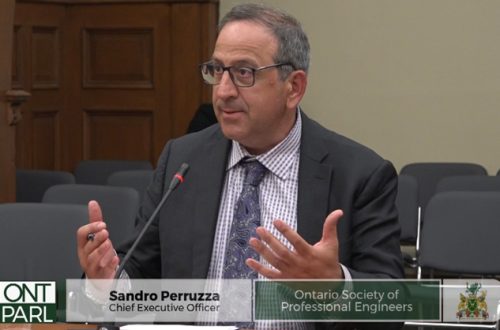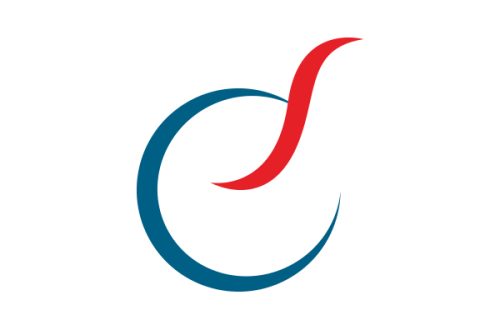In June 2025, the Government of Ontario released its Integrated Energy Plan (IEP). This policy framework sets the course for how the province intends to generate, distribute, and manage energy through to 2050.
The plan brings together existing initiatives with new commitments, touching on virtually every aspect of Ontario’s energy system. It emphasizes long-term planning, infrastructure investment, emissions reduction, and Indigenous partnerships, while reaffirming the importance of energy affordability and reliability.
As Ontario’s independent voice for the engineering profession, the Ontario Society of Professional Engineers (OSPE) has reviewed the IEP through the lens of engineering impact and opportunity. What follows is a high-level breakdown of the plan’s core components and what they mean for engineers working across energy, infrastructure, and sustainability.
The IEP introduces a new model for how energy system planning will be conducted in Ontario. This includes:
- Annual Planning Outlooks (APOs) to reflect real-time system demand scenarios
- Comprehensive scenario reviews every four years
- Ministerial oversight to align technical forecasting with government priorities
Engineers working in system modeling and forecasting will be critical in implementing these new cycles. The plan also moves toward a unified planning framework for all fuels — electricity, natural gas, hydrogen, Renewable Natural Gas (RNG), and biofuels — by 2025, requiring more cross-sector technical coordination than ever before.
Nuclear Energy
The IEP reinforces nuclear energy’s central role in Ontario’s electricity mix, with ongoing projects like the Darlington New Nuclear Project and future large-scale proposals, including Bruce C and the OPG Wesleyville site. These developments will demand engineering expertise across regulatory design, infrastructure, environmental assessment, and safety.
Thermal Energy
A notable gap in the IEP is the lack of consideration for thermal energy, particularly in the context of nuclear generation.
Nuclear power plants produce large amounts of heat, much of which is currently wasted in electricity-only generation. Thermal energy, especially when harnessed through cogeneration or district energy systems, can be a powerful tool for decarbonizing heating in buildings and industrial processes. Countries like Finland and Switzerland have successfully integrated nuclear-powered district heating systems, maximizing efficiency and reducing emissions. Ontario’s failure to address this opportunity represents a missed chance to tap into a proven decarbonization pathway, and it is an area where engineering innovation and policy alignment are urgently needed.
Natural Gas Policy
A formal natural gas policy statement now directs the Independent Electricity System Operator (IESO) and Ontario Energy Board (OEB) to factor natural gas into all energy system planning and adjudication. This removes previous uncertainty and confirms natural gas’s continued role in home heating, electricity generation, and economic development. Engineers must now account for this stable—but-still-evolving—position when designing integrated and emissions-aware systems.
Electricity Distribution
One of the IEP’s most actionable sections relates to electricity distribution and the integration of Distributed Energy Resources (DERs). The plan defines “grid modernization” and commits to new investments in battery storage, demand response, net metering reform, and local energy planning.
Engineers will be central to executing these technical transitions, including:
- Designing DER interconnections
- Developing forecasting and capacity mapping tools
- Improving cybersecurity and grid resilience
- Supporting expanded programs like the Grid Innovation Fund
Transmission Expansion
Transmission expansion also remains a priority, with several projects planned to accommodate growth and connect new supply. The IESO is developing a transmitter selection framework to pre-qualify transmission providers through a new registry and competitive process. Indigenous equity participation is expected to be embedded in future procurement rounds.
Projects of note include:
- The Bowmanville-to-GTA line to connect Darlington SMRs
- Barrie–Sudbury and Greenstone transmission lines
- Redesigning work across several corridors to increase capacity
Competitive Procurement
The IEP continues Ontario’s emphasis on competitive procurement to secure new generation and capacity. Three streams are outlined:
- LT2 Procurement for up to 6,000 MW of capacity and 14 TWh of energy
- Long Lead Time Procurement for long-duration storage and hydro
- Local Generation Procurement to scale DERs without major transmission costs
Simultaneously, a $10.9 billion investment in energy efficiency aims to reduce system load by 3,000 MW and 18 TWh by 2036. Engineers involved in retrofits, industrial processes, and performance-based design will find significant opportunities in the delivery of both electricity and gas savings.
Indigenous Engagement
The IEP outlines a framework in which Indigenous communities are positioned as equity partners and co-developers in Ontario’s energy future. Key updates include:
- Increased funding for the Indigenous Energy Support Program
- A $3 billion expansion of Indigenous loan guarantees
- Support for Indigenous-led hydro, storage, and community energy projects
- Emphasis on grid access and energy reliability on reserves
These commitments will reshape how engineering projects are initiated and delivered. Engineers must work closely with Indigenous communities from the earliest planning stages, co-developing infrastructure in ways that respect Indigenous knowledge and self-determination.
Ontario’s Integrated Energy Plan presents a complex but necessary evolution of energy policy. Engineers will be expected to:
- Deliver technical insights in scenario modeling and long-term planning
- Lead project execution in nuclear, DER, transmission, and conservation
- Collaborate with Indigenous partners and diverse communities
- Adapt to integrated system approaches that cross fuel types and jurisdictions
At OSPE, we believe engineers are essential to ensuring that this transition is grounded in practicality, evidence, and public interest. We will continue to advocate for policies and programs that recognize engineering’s central role in building an energy system that is resilient, affordable, equitable, and one that fully leverages all energy outputs, including thermal, to serve Ontario’s climate and economic goals.





Comments (3)
Can I get a copy of the IEP?
Hi Frank, Please find the IEP here
A good report in general.
It does not talk about targets in terms of numbers. What are the targeted generation for different modes, nuclear, thermal etc. and new Technlogies in the next 25 years? Targeted efficiencies improvements, investment in research, environmental impacts forecast are important for the IEP to consider and set targets.
Maybe I am missing these details in the report. It will be good to know if the analysis has considered some of these Factors.
Thanks.
Leave a Comment